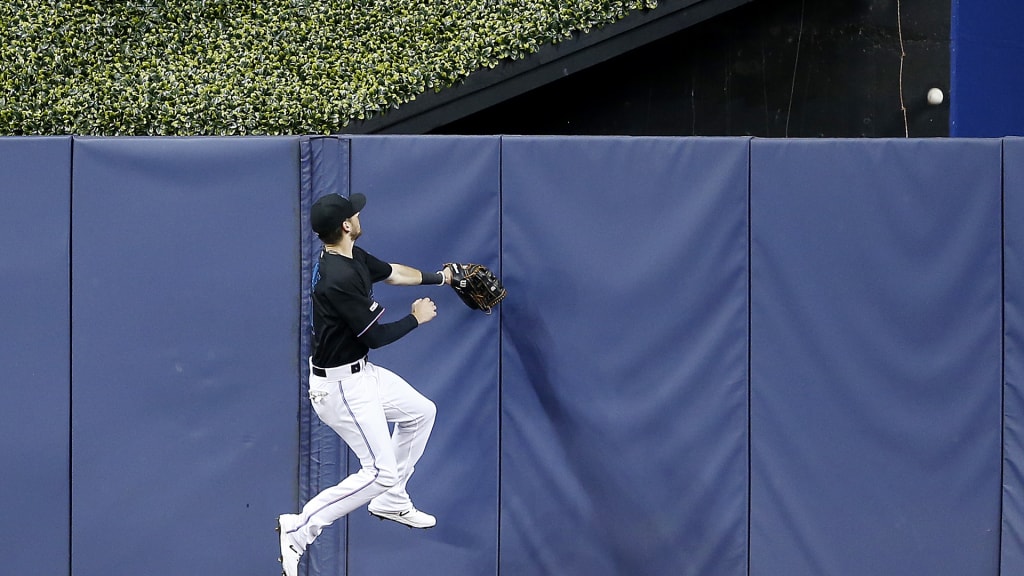
MIAMI -- Marlins Park underwent a series of changes prior to the start of the 2019 season. Could the next major revision be moving in the outfield fences?
Marlins chief executive officer Derek Jeter didn’t rule it out this week when he addressed the media before Miami faced the Dodgers.
Asked specifically about altering the outfield dimensions, Jeter grinned and said: “Maybe.”
The Marlins rank last in the Majors in home runs with 100, with 50 of them coming at home.
Since Marlins Park opened in 2012, there have been 459 home runs hit there. Only Oracle Park in San Francisco (392) has fewer in that span.
“I don't want to start talking about things until we make a decision that that's what we're going to do,” Jeter said. “One of the things I've said is I don't want to make any promises we can't keep. If we say we're going to do something, we're going to do it.”
Marlins Park has already moved in and lowered the fences in some areas in 2016. From 2012-15, the walls were set from 344 feet down the line in left to 386 in left-center; 418 in dead center; 392 in right-center and 335 down the line in right.
The height of the walls ranged from 11 1/2 to 13 feet.
The walls in left field and right field have since been lowered in some areas to 7 feet high.
Last offseason, the organization made a series of ballpark enhancements, which included adding AutoNation Alley, a multi-tiered standing room section in center field. It replaced the colorful Home Run sculpture that drew so much attention from 2012-18. Another standing room area was added down the right-field line, and the color scheme of the outfield walls was changed from lime green to blue.
Jeter noted the organization is considering other ways to enhance the ballpark experience.
“We're evaluating ways we can make the fan experience better,” Jeter said.
The current Marlins Park dimensions are 407 feet in center, 382 feet in left-center and 392 feet in right-center. With the ballpark located at sea level, the ball doesn’t travel particularly well in Miami.
But like any other stadium, if players hit the ball well, they are rewarded, mainly on the pull sides: It’s 335 feet down the right-field line, and 340 down the left-field line.
According to Statcast, there have been 26 home runs hit to straightaway center at Marlins Park this season, nine of them by the Marlins. The most straightaway homers have been at Angel Stadium of Anaheim (40), followed by Miller Park in Milwaukee (35) and Dodger Stadium (33).
There have been record-setting home run totals across Major League Baseball in 2019. Through the years, Marlins players publicly and privately have noted how their ballpark plays big, and that it doesn’t reward hitters for using the middle of the field.
The past two seasons, the Marlins have been infusing more power threats into their system. In the 2019 MLB Draft, they selected JJ Bleday in the first round, and Kameron Misner in the Competitive Balance Round A. Both are left-handed hitting outfielders with power.
Before the July 31 Trade Deadline, Miami also acquired left-handed hitters Jazz Chisholm (from the D-backs) and Lewin Diaz (from the Twins).
“I think that's no secret,” Jeter said of adding more power bats into the system. “It's the reason why, especially in this past year, when you talk about our Drafts, you talk about our trades, the international market. We've been able to acquire some players that we feel as though are going to have a lot of power.
“You don't want to have an organization that's filled with just pitching prospects. You want to have position players as well. Along with those position players, you'd like to have some guys who have power, and the potential for power. We have a few of those guys now.”


